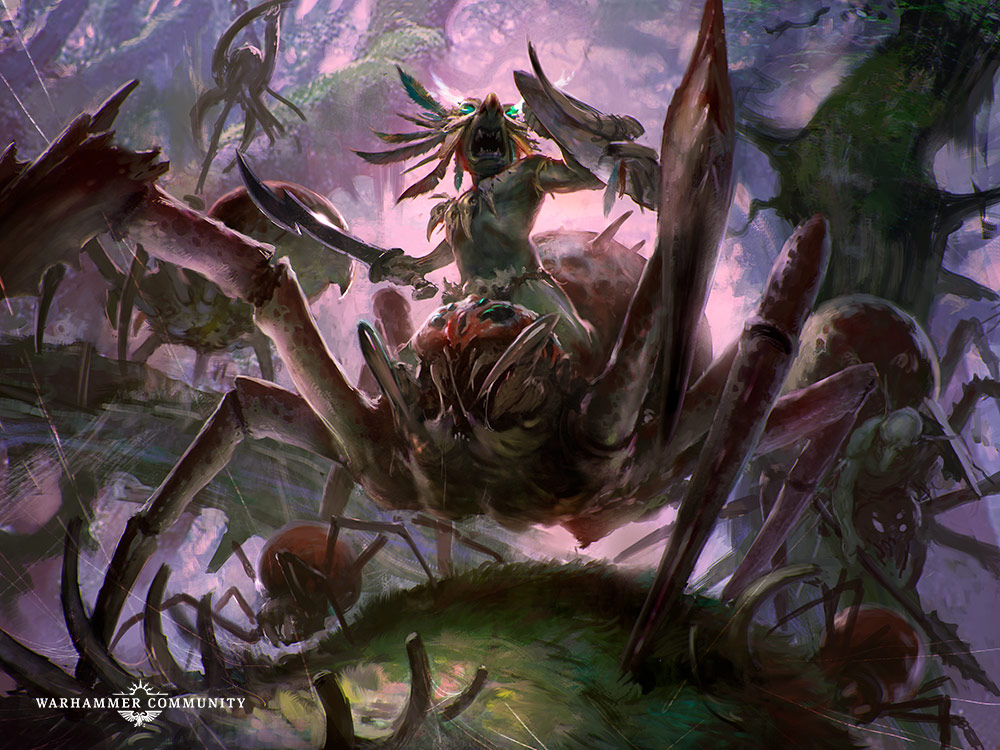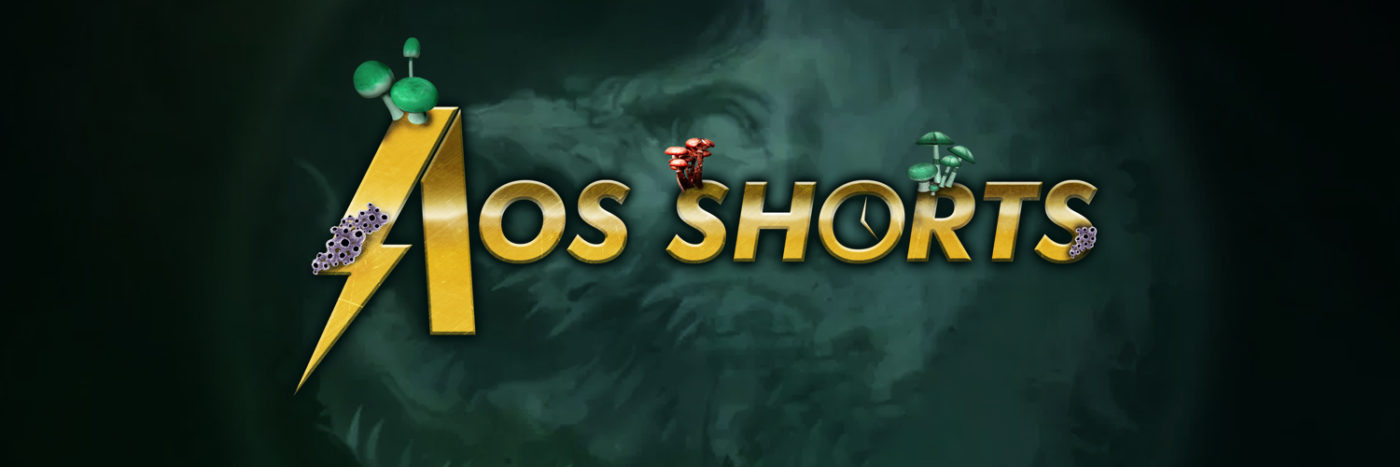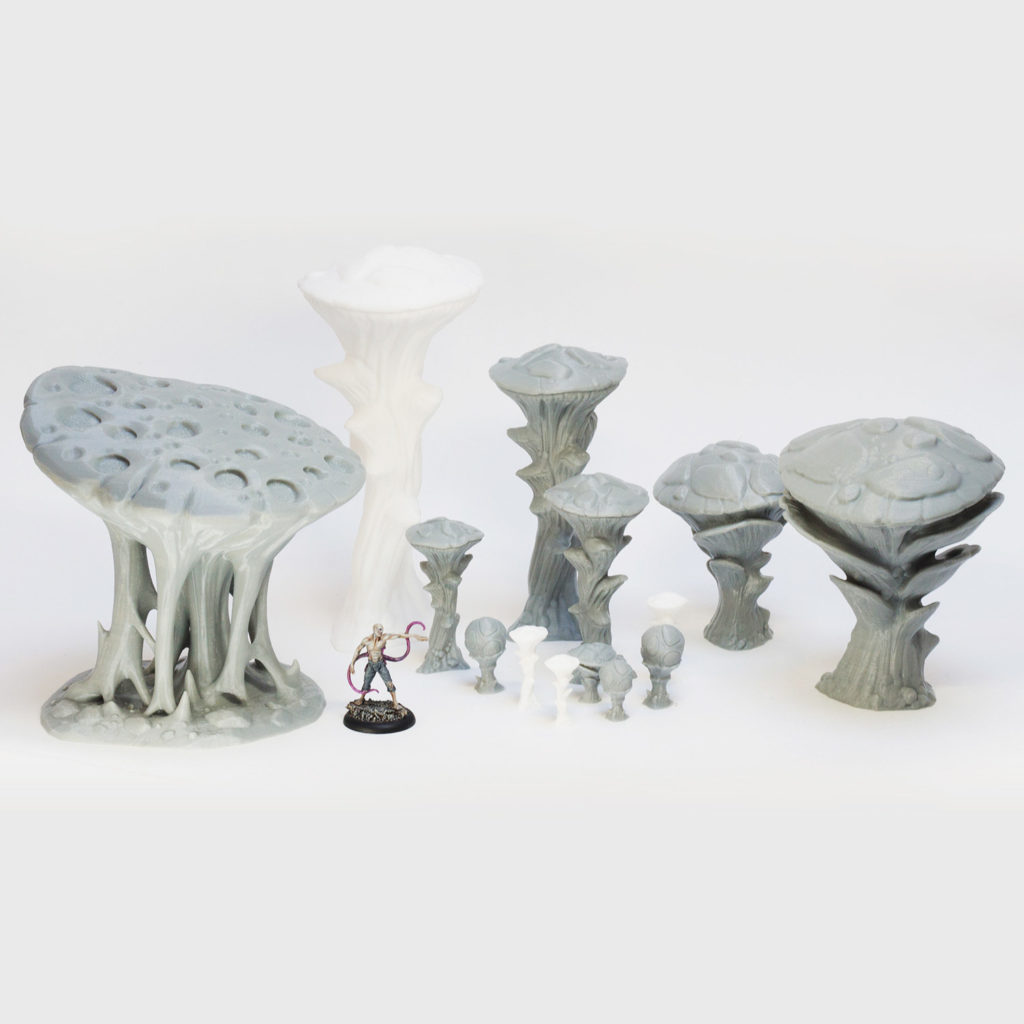Hey all, I’ve been sent an advance copy of Battletome: Gloomspite Gitz and want to give you an AoS Shorts-style review of the new release. This Gloomspite Gitz review will be in parts – each focusing on different aspects of the new battletome over the coming days.
This review introduces the Gloomspite Gitz and covers the top 10 things you need to know. Subsequent parts will provide a warscroll by warscroll review, slice apart the allegiance abilities, assess battalions, and cover the lore and background. As I write them, I’ll link them here.
For all the preview information we have seen so far from Games Workshop and other sources, check out my all-in-one page.

In addition to these written previews, I’m going to be recording a show with Donal Taylor, (@WargamerDonal) the UK’s most infamous grot expert, in the next week or so to dive into the matched play aspects further.

I also want to do a follow-up post in a month after the FAQ. This gives us all time to digest the book.
And just before we dive into it, the site is now partnered with Dark Fantastic Mills. DFM produces amazing 3D printed terrain and you can use the code “AoS Shorts” to get a further 10% off and support the site. The terrain is super light so shipping worldwide is surprisingly cheap. Check out the Doomcap Deeps range for things suitable mushroom-inspired and DFM have special offers on now.
My approach to reviews
As this is my first preview review, I want to explain how I:
- intend to approach these reviews and
- hope to add value to the existing blog, podcast and YouTube options for preview reviews out there.
Short and useful is always my aim. Covering just what you need to know about the Gloomspite Gitz (whether you are a narrative or matched play gamer).
Some provisos
I won’t be making grand definitive calls about the likely matched play effectiveness of the army in this review. As we see with most releases the competitive matched play lists can offer differ significantly once players have had time to consider the book, any FAQs or errata. Nor will I be making recommendations about purchases. Its not my place to tell you what is cool or how to spend your hobby dollars.
Who are the Gloomspite Gitz?
The Gloomspite Gitz are the combined forces of the Moonclan (Night Goblins), Spiderfang (Goblin Spider Riders) and Troggoths (Trolls), with the odd Gargant (Giant) shambling along for the ride. This army embodies the random, comical, spiteful malevolence that we all come to expect from the Moonclan and their fellow subterranean dwellers.
The Gloomspite Gitz share a worship of the Bad Moon and are united under Skragrott the Loonking. The Bad Moon is a portent for lunacy and predicting its appearance is of crucial importance to the Gloomspite Gitz. The Bad Moon is at the centre of the Gloomspite Gitz’ allegiance ability.
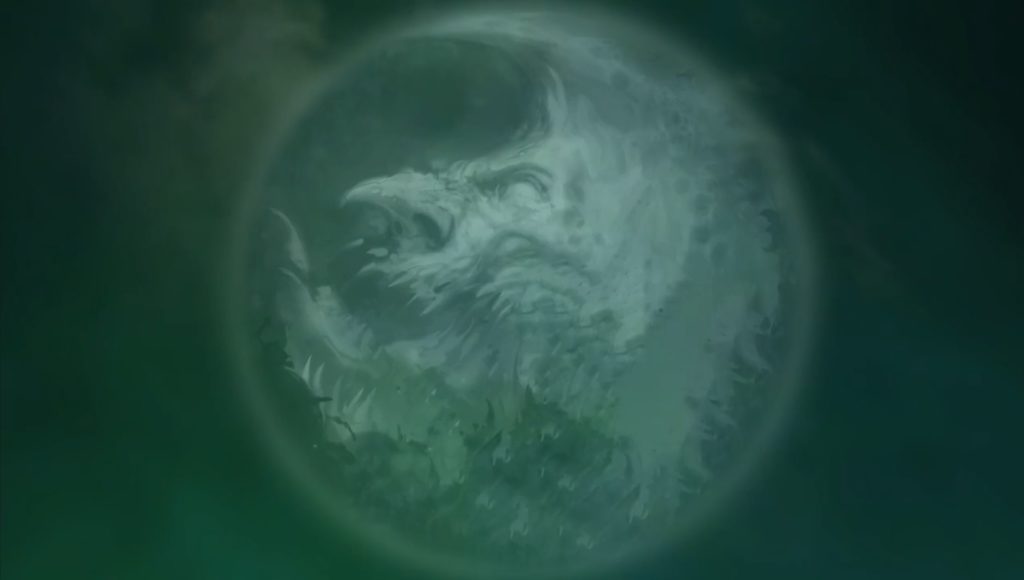
I’ll have a full lore and background review in the coming days, but in the mean time, you could read my notes on the Warhammer TV Gloomspite Gitz lore video.
Gloomspite Gitz Review: Essentials
Here is what I think are the ten key points from Battletome: Gloomspite Gitz:
- Availability of army builds
- Several different playstyles
- Moonclan ascendant
- Spiderfang re-energised
- Troggoths – strong models, new rules, some question marks?
- the Bad Moon – worth building around?
- Loonshrine – a massive rock
- Fungoid Cave-Shaman – a different role, still useful
- Gloomspite magic is strong but different
- New Fanatics, not quite like your old fanatics
Available army builds
As with all recent Warhammer Age of Sigmar battletomes, Games Workshop aims to have a variety of available army builds within the same faction.
The Gloomspite Gitz are no different. You can make a Moonclan army, a Squig-based army, a Spiderfang army, a Troggoth or a mixture of the lot. Depending on your general, you can unlock additional battleline units:
- Any general: Shootas and Stabbas are battleline
- Dankhold Troggboss unlocks Rockguts and Fellwater Troggoths as battleline
- Spiderfang keyword general unlocks Spider Riders
- A general on Giant Cave Squig or Mangler Squig unlocks Squig Hoppers
- A Moonclan general unlocks Squig Herd
Whether each of these builds is actually viable, we will see, and I’ll touch on in later reviews this week.
Gloomspite Gitz can have “one-drop” army builds, with Squigalanche likely to be the strongest of the “one-drop” option from a competitive matched play standpoint.
IMAGE
Playstyle options
Games Workshop also try to offer a variety of playstyles in each army (regardless of whether they are all viable from a competitive matched play perspective).
My initial impression is that the Gloomspite Gitz could run:
- horde builds with lots of grots recycling through the Loonshrine
- an “alpha bunker” list (a large unit thrown rapidly into the enemy’s lines to slow its advance while your other pieces move into position and claim objectives)
- combat heavy squig or troggoth lists
- a fast mortal wound spider swarm list
- magic heavy list
I’ll touch on these in more detail in our parts of the preview series. Available playstyles – horde / alpha bunker / combat speed heavy squigs / mortal wound swarm / casting heavy
Moonclan ascendant
The Moonclan look like early beneficiaries in the new book, especially the squig-based units.
- The Loonboss on Mangler Squig gives you a powerful, fast hero unit for 300 points. At that points cost you could take two. Plus add the Fight Another Day command trait to be able to charge and retreat as well and the Squig Lure spell to run and charge.
- The Boingrot Bounderz are cheap, damage dealers offering a combination of mortal wounds, speed and numerous normal attacks. For instance, 15 do 7.5 mortal wounds on the charge, then have 60 attacks which would do 20 wounds on average at -1 rend (or 90 attacks and 30 wounds if they are buffed by the Sneaky Snufflers.
- Moonclan units benefit with recycling Stabba units through the Loonshrine and the synergies from Snufflers and the Sporesplatta Fanatics.
- Unfortunately, Shootas still are just going to give you a large volume attacks without much end result. You can buff their hit rolls, but not their wound rolls or rend (like Sneaky Stabbin did). So I don’t suspect we will see large hordes of them on the table.
- Moonclan also get the greatest benefits from some of the battalions as the Squig Rider Stampede and the Squigalanche and artefacts such as the Squig Lure.

Spiderfang re-energised
Spiderfang were one of the micro-factions of Warhammer Age of Sigmar with only 4 units. They have now been fleshed out into a fully fledged force with the full benefits of a modern battletome.
The Spiderfang have far more options, have a higher base movement now (10″), and even stronger mortal wound output (especially under the Light of the Bad Moon, which doubles their mortal wound output by activating them on 5s and 6s). The Scuttleboss combined with the Black Fang artefact and the Spiderfang spell which doubles mortal wounds from spider venom mean you could have a hero doing up to 44 mortal wounds in one combat. I suspect that the interplay of some of these artefacts/spells may be part of the Gloomspite Gitz FAQ in two weeks after the release.
The Spiderfang spell lore also has a number of great options while the Webspinner Shaman on Arachnarok gives you bonuses to cast. I can see people having fun with a mixed mortal wound and heavy spell spider-based army complimented with Scrapskuttle’s Arachnacauldron (to further boost casting) and large Stabba units to hold objectives and zone board space.
The only issue with taking a pure Spiderfang army is that you are foregoing the ability to control the path of the Bad Moon through having Skragrott the Loonking as your general. And as mentioned, the Bad Moon has some real strong benefits for Spiderfang.
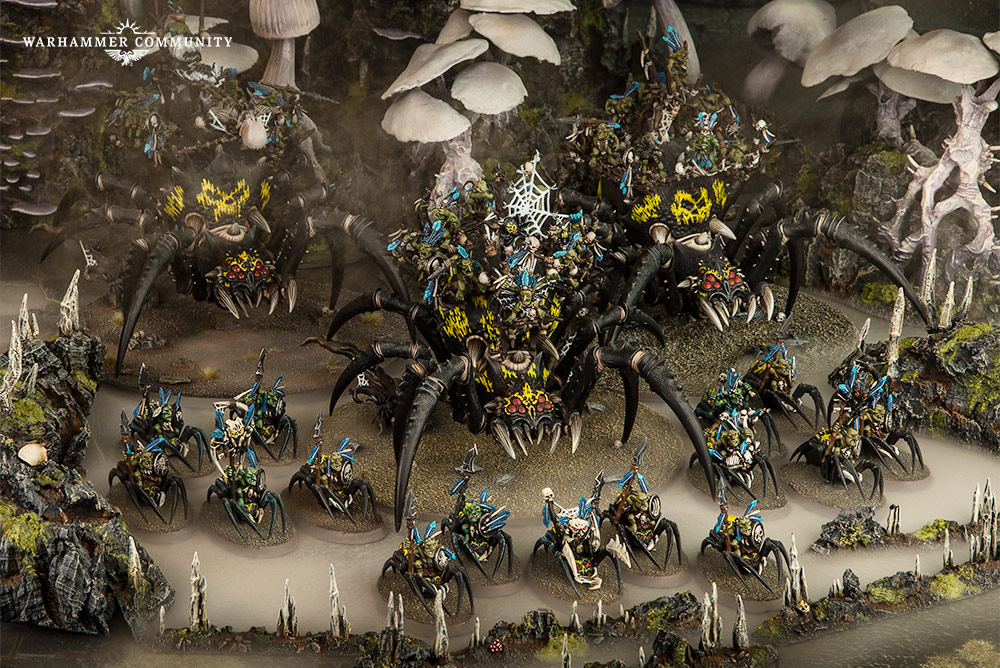
Troggoths – strong models, new rules, some questions?
There has been a lot of coverage in the previews so far about the ability to build a full Troggoth army, led by its new hero the Dankhold Troggboss. The army can revolve around the Troggherd battalion with a Troggboss, units of Rockgut or Fellwater Troggoths for battleline, some Dankhold Troggoths and the odd Gargant if you wanted.
The Troggboss is a great model, but at 300 points is probably only going to be taken by people wanting to field a full or heavy Troggoth list.
The Fellwater Troggoths have received a strong offensive boost for their shooting and melee weapons. However, the healing is not as strong as it once was.
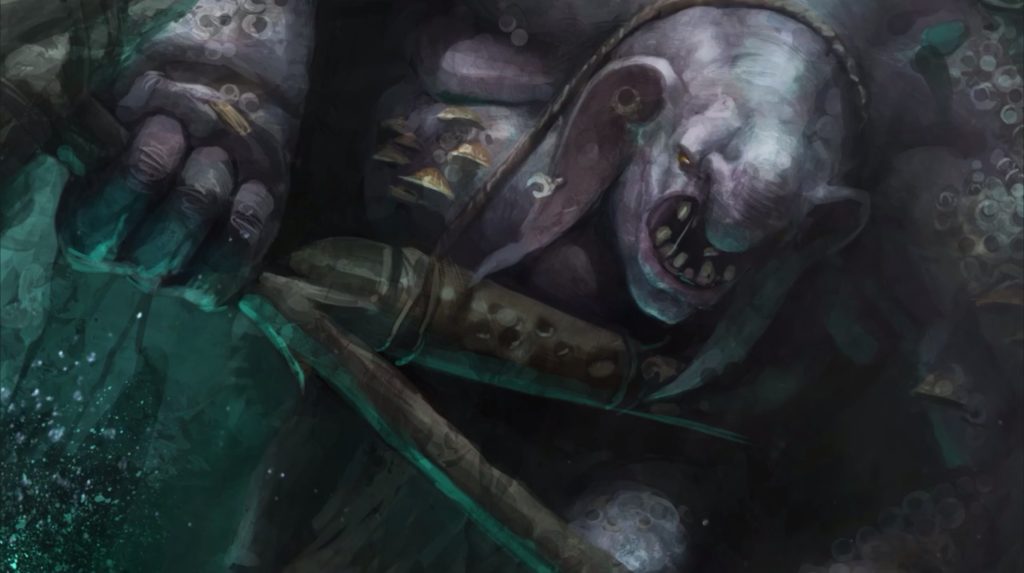
The Bad Moon – worth building around?
The Gloomspite Gitz battle trait is the Bad Moon Rises. As I’ve covered elsewhere, you pick a corner of the board at the start of the game for the Bad Moon to be located. From the start of the second battleround, the Bad Moon will move at a random speed in a diagonal line across the board. The Moon may stay still, move slow or move fast, and has beneficial and negative effects on units in the board quarter it occupies. If it is in the middle of the table, those effects apply to the entire board.
The effects are:
- Enemy Units anywhere on the board are bombarded with meteors from the Bad Moon, and take damage.
- Gloomspite Gitz Wizards under the Bad Moon get +1 to their casting rolls, while all other wizards get -1
- Gloomspite Gitz Generals get an additional command point in each hero phase they’re under the Bad Moon.
- Squigs under the Bad Moon can run and charge in the same turn.
- Moonclan Grot units re-roll hit rolls of 1.
- Spiderfang Grot units deal mortal wounds on a 5+ to hit, rather than a 6+.
- Troggoths can re-roll the dice to see if they regenerate wounds, or double the results of their first roll.
Now, the question for Gloomspite Gitz players is whether it worth building a list around manipulating the Bad Moon in order to maximise its impact, or if the effects will just be a pleasant bonus if they occur when needed. The effects are strong (especially if in the centre of the board), but the timing is unreliable (it could skip the centre of the board entirely), and you may have to heavily commit your army to one quarter of the board (which could be disadvantageous depending on the scenario).
If you do want to manipulate the moon in order to reap its benefits (for a devastating squig or spider charge), Skragrott the Loonking will be your general. Once per battle, Skragrott can choose for the Bad Moon to either not move that battleround, or to make 1 move, or 2 moves that battleround.

The Loonshrine – a massive rock
With each new army for Warhammer Age of Sigmar we now get a faction specific terrain piece which is deployed at the start of the battle without a points cost – think Sylvaneth Wyldwoods, Deepkin boats, Maggotkin of Nurgle trees and Beasts of Chaos herdstones. For Gloomspite Gitz, it is the Loonshrine.

The Loonshrine model is truly massive. It is about 12″ tall and 6 to 8 inches wide, meaning it is perfect for line of site blocking for your heroes or your Squig Gobba artillery (which don’t need line of site to fire). The Loonshrine is set up wholly within your territory, more than 12″ from enemy territory and more than 1″ away from other terrain.
The Loonshrine does two things in addition to just being a big chunk of rock:
- Gloomspite Gitz units wholly within 12″ do not take battleshock tests – useful for your bunker units and to save command points for other things (such as re-roll charges). Its large size really helps create an effective 30″ bubble of battleshock protection that will be very useful in scenarios such as Take and Hold.
- at the end of your turns, and on a 4+, you can return half of a destroyed Stabbas or Shootas unit to the battlefield for free (so 30 models of a 60 model unit etc). You can only do this once for each destroyed unit (it isn’t endlessly recycling grots) and the unit must be set up wholly within 12″ of the Loonshrine and more than 3″ away from enemy units.
The Fungoid Cave-Shaman – a different role, still useful
The Fungoid Cave-Shaman is an amazing model and saw lots of use in Mixed Destruction armies before the release of the Gloomspite Gitz battletome. Its previous command ability allowed one friendly Grot or Orruk unit wholly within 18″ to charge at the start of the following charge phase (even if that unit had ran or retreated). This gave the army great movement for its hammer units.
Now the Fungoid Cave-Shaman does not have a command ability, but generates a command point on a 4+ at the start of your hero phase each battleround. While the loss of movement hurts the army (slightly offset by the Hand of Gork spell and some of the artefacts for squigs), the extra command points are a nice touch for an army that has historically needed them to be effective. The interesting thing to keep an eye on is whether the army is as command point hungry in the future now that it has the Loonshrine to rely on for battleshock immunity.
I suspect we will see a lot of Fungoid Cave-Shamans in Gloomspite Gitz lists given the model’s use as a multi-spell caster and command point factory.

Gloomspite magic: strong but different
Gloomspite Gitz have several strong magic options, with lots of different casters and spell options. Moonclan used to have easy access to boosting casting through eating mushrooms, however those options have now been changed.
Your options for a powerful magic army now revolve around:
- the Loonking (casts and unbinds twice each turn, +1 to cast and unbind)
- Webspinner Shaman on Aracknarok (+1 to cast and unbind for friendly Spiderfang wizards nearby)
- Fungoid Cave-Shaman (casts twice once per game)
- Zarbag (+2 to cast)
- the Arachnacauldron (+1 to cast and unbind, and the caster knows all the Lore of the Moonclans spells)

New fanatics, not quite like your old fanatics
There have been significant changes to Fanatics with the Gloomspite Gitz battletome. Previously, Moonclan Fanatics were set up in hiding and at the start of any charge phase (including your opponent’s) they could be released and set up within 1″ of the unit hiding them. The Fanatics could then charge immediately, acting as powerful blocking units for holding up important charges by your opponent. Now the Fanatics can be released but can’t charge in your opponent’s charge phase.
However, we now have a whole new unit variant called Sporesplatta Fanatics. At 120 points for five models, this unit has a number of cool features, including:
- blocking line of sight to your models behind them – allowing you to protect vulnerable heroes (whether ones with low wounds or whose effectiveness decreases with wounds taken). Your opponent can still shoot the Sporesplatta unit, but will have to waste shots or magic clearing them first before your more important units
- giving Moonclan Grots units wholly within 12″ +1 attack to melee weapons
I can definitely see Sporesplattas used behind Stabbas and in front of a set of support heroes.

More Gloomspite Gitz Reviews
With each Warhammer Age of Sigmar battletome release there is a lot to talk about and the Gloomspite Gitz are a bumper crop given the large number of new units being released and the size of the battletome.
Over the next week or so, I’ll complete the subsequent parts of my Gloomspite Gitz review, including:
- Allegiance abilities, spells and artefacts
- Warscroll by warscroll review
- Moonclan focus
- Spiderfang focus
- Troggoth focus
- Lore and background
In the mean time, let me know what you think of the new releases and the warscrolls we have seen so far. You can contact me on Twitter, Facebook, or Instagram.
